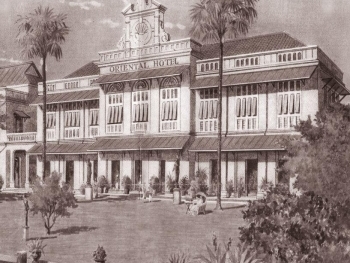The Louvre Museum in Paris is more than just the world’s largest and most-visited museum—it is a living monument to art, history, and human creativity. Home to over 615,000 artifacts, including the Mona Lisa, the Venus de Milo, and the Winged Victory of Samothrace, the Louvre is a treasure trove of secrets, mysteries, and fascinating stories.
But behind its iconic glass pyramid and grand galleries lies a rich history spanning more than 800 years. From its origins as a medieval fortress to its role in the French Revolution and beyond, the Louvre has witnessed some of the most pivotal moments in world history.
Let’s step inside the Louvre and uncover the secrets, scandals, and stories that have shaped this legendary museum.
1. The Louvre’s Origins: From Fortress to Royal Palace
A Medieval Fortress (1190–1546)
Before it became a museum, the Louvre was a fortress built in 1190 by King Philip II to protect Paris from Viking and English invasions. The original fortress featured a massive moat and 30-foot-high walls.
-
Secret: Today, visitors can still see the remnants of this medieval fortress in the Louvre’s underground section, where the original walls and dungeons remain.
A Renaissance Palace (1546–1682)
During the 16th century, King Francis I transformed the fortress into a royal palace, inviting artists like Leonardo da Vinci to his court. His successor, Henry IV, expanded the Louvre, adding lavish galleries and gardens.
By the reign of Louis XIV (the "Sun King"), the Louvre was no longer suitable for a king’s luxurious lifestyle, and the royal court moved to Versailles in 1682. The Louvre, however, remained a center for art and learning, hosting private exhibitions of royal collections.
2. The Birth of the Louvre Museum (1793): A Revolution in Art
The French Revolution and the Louvre’s Transformation
In 1789, the French Revolution changed everything. The monarchy fell, and revolutionaries declared that the royal art collections should belong to the people.
-
On August 10, 1793, the Louvre officially opened as the “Muséum Central des Arts”, displaying 537 paintings, mostly taken from churches and the royal family.
Napoleon’s Role in Expanding the Louvre
Napoleon Bonaparte was one of the Louvre’s greatest benefactors—but also its most notorious art thief. During his military campaigns, Napoleon’s troops looted priceless artworks from Italy, Egypt, and the Netherlands, expanding the museum’s collection immensely.
-
Secret: Many stolen treasures, including the Rosetta Stone, never returned to France—Britain intercepted it and placed it in the British Museum instead.
-
The Louvre was briefly renamed the "Napoleon Museum," and a bust of the emperor stood proudly in its halls.
After Napoleon’s defeat in 1815, many artworks were returned to their original countries, but some pieces, like The Winged Victory of Samothrace and Venus de Milo, remained.
3. The Glass Pyramid: A Controversial Addition
In 1984, President François Mitterrand commissioned a radical redesign of the Louvre’s entrance. The solution? A massive glass pyramid, designed by Chinese-American architect I. M. Pei.
The pyramid was controversial, with critics arguing that its modernist design clashed with the Louvre’s classical architecture. Some even speculated that the pyramid contained 666 glass panes—fueling conspiracy theories about Illuminati connections (in reality, it has 673 panes).
Today, the pyramid is one of the most iconic symbols of the Louvre, welcoming over 7 million visitors per year.
4. The Louvre’s Most Mysterious Artworks and Heists
The Mona Lisa’s Theft (1911)
The Mona Lisa is the Louvre’s most famous painting—but did you know it was stolen in 1911?
-
An Italian handyman, Vincenzo Peruggia, disguised himself as a museum worker, hid inside the museum overnight, and walked out with the Mona Lisa under his coat the next morning.
-
Peruggia believed the painting belonged in Italy, as it was painted by Leonardo da Vinci, and he kept it hidden in his apartment for two years before being caught.
This infamous heist made the Mona Lisa even more famous, turning it into the most recognized painting in the world.
Nazi Looting During World War II
During World War II, the Nazis planned to seize the Louvre’s treasures. The museum staff secretly evacuated thousands of artworks, including the Mona Lisa, to hidden locations in the French countryside.
The Resistance helped protect these treasures, and after the war, the Louvre recovered most of its stolen works.
-
Secret: Many artworks looted by the Nazis remain missing, and the Louvre continues efforts to return disputed pieces to their rightful owners.
5. Hidden Rooms and Underground Secrets
The Secret Apartments Inside the Louvre
Most visitors don’t know that Napoleon III once lived inside the Louvre. His opulent Second Empire apartments, filled with gold chandeliers and red velvet furniture, are still intact and can be visited today.
The Underground Storage Vaults
With limited display space, 80% of the Louvre’s collection is hidden from public view. Many artifacts are stored in underground vaults beneath the museum.
-
Secret: During the 2016 floods in Paris, the Louvre evacuated thousands of priceless artworks to a secret high-security storage facility in northern France to protect them from water damage.
6. The Louvre in Popular Culture: From Dan Brown to Beyoncé
The Da Vinci Code (2003)
Dan Brown’s novel The Da Vinci Code turned the Louvre into a global pop culture phenomenon. The book’s mystery-thriller plot, involving secret societies, hidden messages in Leonardo da Vinci’s works, and murder in the museum, led to a surge in visitors.
-
Fun Fact: After the book and movie’s success, Louvre officials had to increase security around the Mona Lisa and the glass pyramid.
Beyoncé and Jay-Z’s “APESHIT” Music Video (2018)
In 2018, Beyoncé and Jay-Z filmed their APESHIT music video inside the Louvre, featuring iconic artworks like the Mona Lisa and the Winged Victory of Samothrace. The video was a massive cultural moment, highlighting the Louvre’s influence in modern music and art.
7. Visiting the Louvre: Tips and Hidden Gems
-
Visit early or late: The best time to visit is early morning or Wednesday and Friday evenings, when crowds are smaller.
-
Explore beyond the Mona Lisa: Many visitors rush to see Mona Lisa, but don’t miss less crowded gems like:
-
The Raft of the Medusa – A dramatic painting of a shipwreck tragedy.
-
The Code of Hammurabi – One of the earliest written legal codes.
-
The Galerie d’Apollon – A golden hall filled with royal treasures.
-
Conclusion: The Louvre’s Legacy
With over 800 years of history, the Louvre is more than just a museum—it is a symbol of art, culture, and human ingenuity. Whether you visit in person or explore its treasures online, the Louvre remains one of the greatest cultural institutions in the world. 🏛✨



